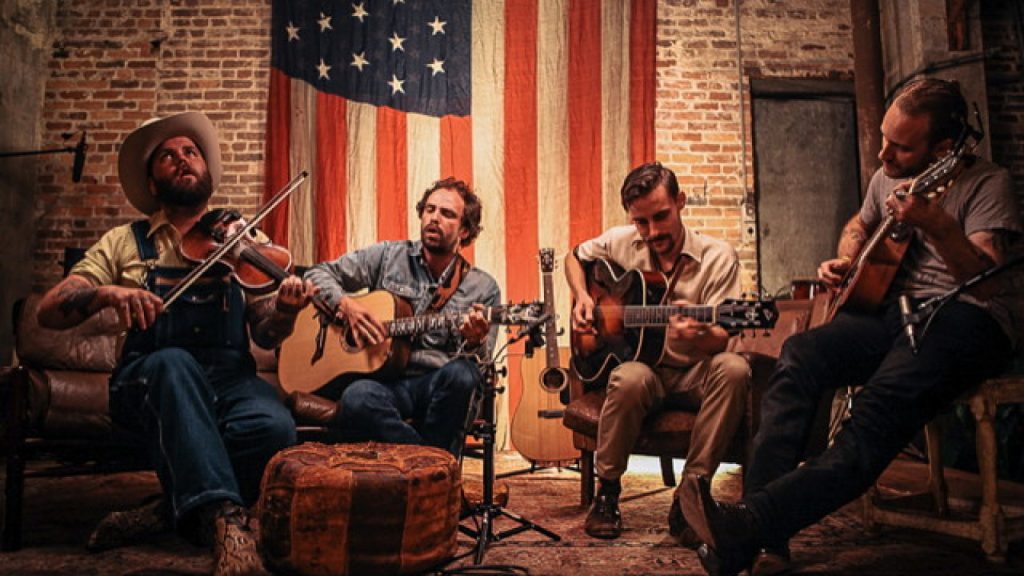Upon a recent viewing of the forgotten 70s documentary Heartworn Highways, I was intellectually struck by the cultural significance on display as the likes of Townes Van Zandt, David Allan Coe and more showed a different side of country music at the time. While that remains a film I greatly admire, it was not one that struck me deeply on an emotional level. The film I was personally waiting for was the follow-up nearly forty years later from filmmaker Wayne Price. While I strive to remain objective in any review that I write, Heartworn Highways Revisited is a film that tests my ability to do so due to how closely I relate to the subject matter. As someone born and raised around Nashville and deeply embedded into the music scene during this period especially, this film taps into a nostalgia I did not know I was missing. Earlier this year, the SXSW film We Are The Thousand made me long for the live music experience, but Heartworn Highways Revisited is a film that perfectly encapsulates the deeper communal experience of Nashville music that has been disrupted for far too long during our current circumstances.
Recorded in early part of the 2010s, Heartworn Highways Revisited picks up where its predecessor left off by not just further exploring “outlaw” country but the way in which the current generation of musicians in Nashville interpret those traditions and how it has formed a close-knit community. It is said that Guy Clark was the inspiration for the original documentary, and the perfect person to take up that mantle is the one and only John McCauley of the incredible band Deer Tick. The opening salvo into this journey is a slow, gorgeous rendition of fan-favorite “Ashamed” that reveals an artist who does not just enjoy writing songs, but needs to in order to survive. This will be a recurring theme for all of the talented individuals who pop in and out of this film.

It does not take long for the film to get to the heart of what it is trying to capture for those not a part of this community. While not significantly older than most of the subjects, Bobby Bare Jr. acts as something of an elder statesman of the scene with his ties to both the classic country music history through his familial heritage and his current place as an amazing singer-songwriter and musician. Bare details how songwriters like Kris Kristofferson used to be able to get a cut from stars like Johnny Cash, but these days the landscape is much more fractured (“Kenny Chesney would never cut one of his songs in a million years…”). The division between “East Nashville” musicians and the “Music Row” contingent is stark despite their roots from the same source. As he humorously boils it down from a second-hand Tom Peterson anecdote, “It’s the same music in an Americana gig as a Country gig, just no Republicans.” While this is obviously an offhand joke, there is something to the welcoming nature of the community that you can feel through the rest of the film.
If we are assigning proxies to the original film, Jonny Fritz would be the spiritual successor of Townes Van Zandt. First seen scraping the years off the windows of his newly acquired house in East Nashville, the energetic and hilarious Fritz bounces around from one hilarious thought to the next. He has dreams of turning his garage into a “motorcycle museum” and to rent out his house while keeping a tiny space in a loft for himself so he can live on the road and “tour forever.” This is a sensibility that feels most connected to the “outlaws” of the past and how they approached their music. It makes sense that he happens to be a distant cousin to David Allan Coe, who serves as one of the few original participants to pop up in this follow-up. The years have not been kind to Coe, mostly due to embezzlement and bankruptcy shenanigans that you can hear about in full in the special features, but the wisdom that he attempts to impart on the newer generation makes for among the most poignant moments in the film.

It is through the music that the film most honors the past and conveys the sense of community. Perhaps even more so than the original film, nearly everyone on camera is shown at one point or another in the presence of the other subjects in the film, either in a performance setting or just by virtue of the fact that this community is so interconnected and friendly. The best example of this is when we get a fly-on-the-wall look at a potluck where notable names like Fritz, Robert Ellis, Shelly Colvin, Josh Hedley and so many more catch up with one another in Colvin’s house. A beautiful performance from Nikki Lane and Colvin occurs not because there is a paying audience, but because this is who these people are deep down. McCauley and Fritz pay a visit to Guy Clark as a nice nod to his “L.A. Freeway” opening from the first film, and he recounts the story behind that song and more with a sage-like delivery. A rendition of the song by Josh Hedley intercut with this serves as the perfect tribute to the legend.
We are a few years out from the film’s original 2017 release and the emotional impact has only grown for various reasons. For those who only have what the film is able to capture, there is the sadness of losing both Steve Young and Guy Clark in 2016 which is acknowledged with an end dedication. That a group rendition of “L.A. Freeway” with Clark and many of the new generation of artists concludes the film is very fitting. It is hard to calculate the true nature of loss since this time. Institutions such as the record store Fond Object or off-the-beaten-path venue The Stone Fox, both featured prominently in the film, have sadly closed their doors in recent years. In one of the best performances of the film, Robert Ellis performs his heartbreaking ode to life on the road, “Tour Song,” to a captivated audience at The Stone Fox with footage of his domestic life woven in for the perfect cavalcade of emotion. On a more personal level, last year we also tragically lost the great Justin Townes Earle, son of original Heartworn Highways subject Steve Earle. The younger Earle is not in the new film much, but his performance is unforgettable.

On a more abstract level, one of the most devastating losses is the sense of community that we have lost over the last year-and-a-half. While the vast majority of people do not have a personal connection to the Nashville music scene, they more than likely have a similar community that was upended. At the very least, the film lovingly shows what a special, collaborative setting this was for so many, and the thought of that being fractured is heartbreaking. Viewing this film as someone somewhat on the front lines, I can safely say that what is presented here is genuine. While the faces may have changed somewhat in the intervening years, the spirit has stayed the same. That this film serves as a time capsule for this very special time in this very special place is a treasure for society. Heartworn Highways Revisited not only captures some of the best music that Nashville had to offer at this time, it captures the “soul” of Music City that tourists will never get to see.

Video Quality
Heartworn Highways Revisited comes to Blu-Ray in its original aspect ratio from a lovely high definition master. The film mostly consists of new footage with occasional scenes from the original film and footage from YouTube videos interspersed. The documentary footage looks as technically excellent as it can look in high definition. The transfer appears to have plenty of room to breathe and there are no issues with compression artifacts, banding or other digital nuisances. The footage of the classic film seems to match the high quality of that Blu-Ray that I recently reviewed. Interview segments look sleek and clear depending on the filming conditions with natural skin tones and detailed facial features. The colors featured in the film are natural and vibrant as they provide a nice visual pop on screen. Black levels are appropriately deep and give way to a nice amount of detail in shadows. I do not see how this set could have been improved visually. It’s a beautiful transfer handled with care by Kino Lorber.
Audio Quality
The new Blu-Ray is presented with both a lossless DTS-HD 5.1 and 2.0 Master Audio track that perfectly captures this material. The performances are the standout aspect of this feature, and it mostly holds up incredibly well considering the circumstances under which some of the performances were captured. There are a few moments that Price points out in the commentary track where the mouths don’t exactly sync up with the music due to some different takes being stitched together from different angles. There are also the occasional environmental sounds that crop up during the performances like cars driving by or audience chatter that is inherent to the source and not a flaw with the presentation. The dialogue is as clear and consistent as it can be, but there are very minor sound issues due to the source material and how the documentary was filmed on the fly. The track remains faithful to the source material and that is all you can really expect. English subtitles are provided for those who desire them. The film has a top-notch audio presentation on Blu-Ray.

Special Features
- Audio Commentary: Director Wayne Price provides a very worthwhile commentary track in which he discusses parallels with the original film, choosing the right opening song, gaining the involvement of the participants, background information about moments featured in the film, footage that did not make the cut and much more that proves to be an essential listen for anyone who loves this documentary.
- Bonus Footage: There is 27 minutes of unused footage from production of the film provided here including more Josh Hedley exploring Fond Object, Shovels & Rope telling a hilarious story about going on a cruise, Jonny Fritz telling various humorous stories about a fire pit and meeting a card counter, candid dinner party footage, David Allan Coe detailing his embezzlement and more.
- Trailers: The minute-and-a-half long trailer for Heartworn Highways Revisited is included here. There is also a trailer provided for Heartworn Highways.
Final Thoughts
Heartworn Highways Revisited is the perfect encapsulation of the fabled Nashville music scene as it actually is away from the manufactured Music Row. The subjects that the film chooses to follow are all incredible in different ways with each person providing something essential to the final product. The performances are spectacular and the personal moments are very heartfelt. Kino Lorber has provided a new Blu-Ray that sports an A+ audio/visual presentation and a nice collection of supplemental features. Whether you are a longtime fan of this music or a newcomer looking to try something new, this documentary will prove to be a fascinating viewing experience. Highly Recommended
Heartworn Highways Revisited is currently available to purchase on Blu-Ray, DVD and Digital.
Note: Images presented in this review are not reflective of the image quality of the Blu-Ray.
Disclaimer: Kino Lorber has supplied a copy of this disc free of charge for review purposes. All opinions in this review are the honest reactions of the author.

Dillon is most comfortable sitting around in a theatre all day watching both big budget and independent movies.







